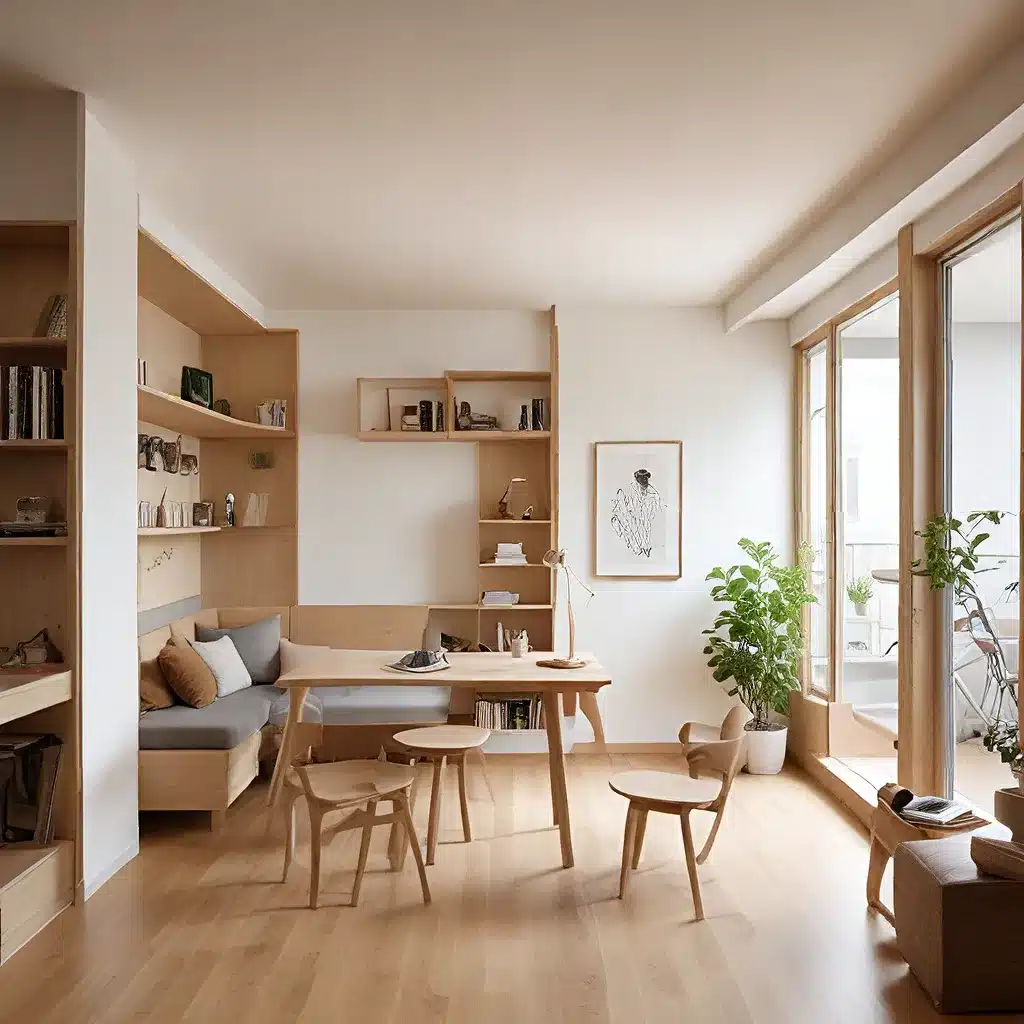
As the landscape of modern living continues to evolve, our homes have become more than just places to reside – they’ve transformed into dynamic, versatile hubs that cater to our ever-changing lifestyles, work arrangements, and family dynamics. Gone are the days of the one-size-fits-all living space; instead, the concept of multi-use, flexible areas within our residential abodes is rapidly gaining traction.
Designing for Adaptability: The Art of Flexible Spaces
At the heart of this shift lies the need to create spaces that can easily adapt to our shifting needs and aspirations. Interior designers play a crucial role in this process, helping homeowners plan and optimize these multifunctional areas to ensure they remain relevant and functional over time.
One of the primary strategies in this adaptable design approach is functional flexibility. By considering multiple functions for a space, designers can create open floor plans that can be easily divided or combined, with movable furniture and built-in storage that can accommodate various uses. For example, a room can seamlessly transition from a home office to a playroom or guest bedroom, depending on the family’s current needs.
Zoning: Defining Distinct Areas within a Shared Space
Another key element in designing flexible living spaces is the concept of zoning. By creating different zones within a room using rugs, lighting, or furniture placement, designers can allow the same space to serve multiple functions without feeling cluttered or disorganized. For instance, a large living room can have a dedicated area for watching television, while another section serves as a reading nook or play area.
Maximizing Storage: The Importance of Built-In Solutions
Efficient storage solutions are essential in any adaptable living space. Built-in cabinetry, shelves, and closets can be customized to accommodate a variety of needs, such as toy storage, sports equipment, or hobby supplies. Closets with adjustable shelving can easily adapt to changing storage requirements, ensuring that the space remains organized and functional as the homeowner’s needs evolve.
Future-Proofing: Designing for Long-Term Adaptability
When creating flexible living spaces, it’s crucial to consider the potential future needs of the homeowners. Incorporating features like wider doorways and grab bars in bathrooms can make a space more accessible, allowing residents to age in place comfortably. Ensuring that there are sufficient electrical outlets and data connections can also future-proof a space, enabling it to accommodate the changing technological needs of the occupants.
Multipurpose Rooms: Maximizing the Potential of Every Square Foot
Designating certain rooms as multipurpose can be particularly beneficial in adaptable living design. For instance, a guest bedroom with a built-in desk and storage can also serve as a home office, while a basement or attic can be transformed into an income-generating rental unit or an additional living space for teenagers or in-laws.
Flex Rooms: Embracing Versatility in Specific Spaces
Another strategy in adaptable design is the inclusion of flex rooms – spaces that can be easily transformed to meet changing needs. Sunrooms, enclosed porches, or underutilized areas can be converted into playrooms, art studios, or fitness spaces, as long as they have proper insulation and climate control for year-round use.
Outdoor Spaces: Extending the Adaptability Outdoors
When it comes to adaptable living, the outdoor spaces of a home should not be overlooked. Versatile outdoor areas that can accommodate activities ranging from gardening to entertaining to children’s play can significantly enhance the overall flexibility of a residential property.
Maintaining Open Communication: Adapting to Evolving Needs
To ensure that a flexible living space continues to meet the changing needs of its occupants, regular check-ins between homeowners and interior designers are crucial. This ongoing dialogue allows for minor adjustments to be made without the need for major renovations, keeping the space relevant and responsive to the homeowners’ evolving preferences.
Sustainable and Energy-Efficient Design: Future-Proofing with Environmental Consciousness
When designing adaptable living spaces, it’s essential to consider sustainable and energy-efficient design principles. These not only reduce the environmental impact of the home but also save money in the long run, allowing homeowners to allocate resources to other evolving needs.
Adaptable Furniture: The Cornerstone of Flexible Spaces
One of the primary components of a flex space is the furniture. Gone are the days of rigid, bulky pieces that serve a single purpose. Versatile furniture reigns supreme, thanks to its ability to adapt to changing needs. From convertible sofas and modular seating to extendable tables and collapsible chairs, these multifunctional pieces ensure that the space can accommodate a variety of activities, from work to relaxation to entertainment.
Flexible Flooring: Transforming the Foundation of Adaptable Spaces
The flooring of a flex space also plays a pivotal role in its adaptability. Easy-to-change flooring options, such as marmoleum, carpet tiles, and luxury vinyl plank (LVP), offer several benefits that can transform a room. These include quick transformations, improved maintenance and durability, enhanced creativity and design, and increased sustainability by reducing the need for full-scale replacements.
By incorporating these strategies and collaborating closely with interior designers, homeowners can create adaptable living spaces that not only accommodate their current needs but also evolve seamlessly as their lifestyles, family dynamics, and personal preferences change over time. These versatile, future-proof homes provide the perfect canvas for personalized, luxury living, ensuring that the spaces within reflect the dynamic nature of modern life.
As you embark on your journey to create an adaptable abode, remember to visit Urban Grace Interiors – a team of experienced interior designers who specialize in crafting bespoke, flexible living spaces that cater to your evolving needs and aspirations.

